Abstract
The largest part of the medical record today consists of notes documenting the care delivered to patients and the clinical events relevant to diagnosis and treatment. These "progress notes" serve as the repository of medical facts and clinical thinking, and are intended as a concise vehicle of communication about a patient's condition to those who access the health record. They should be readable, easily understood, complete, accurate, and concise. They must also be flexible enough to logically convey to others what happened during an encounter, e.g., the chain of events during the visit, as well as guaranteeing full accountability for documented material, e.g., who recorded the information and when it was recorded. This paper describes a model for progress notes, which addresses the above needs, and outlines the rationale and principles which led to that model.
Full text
PDF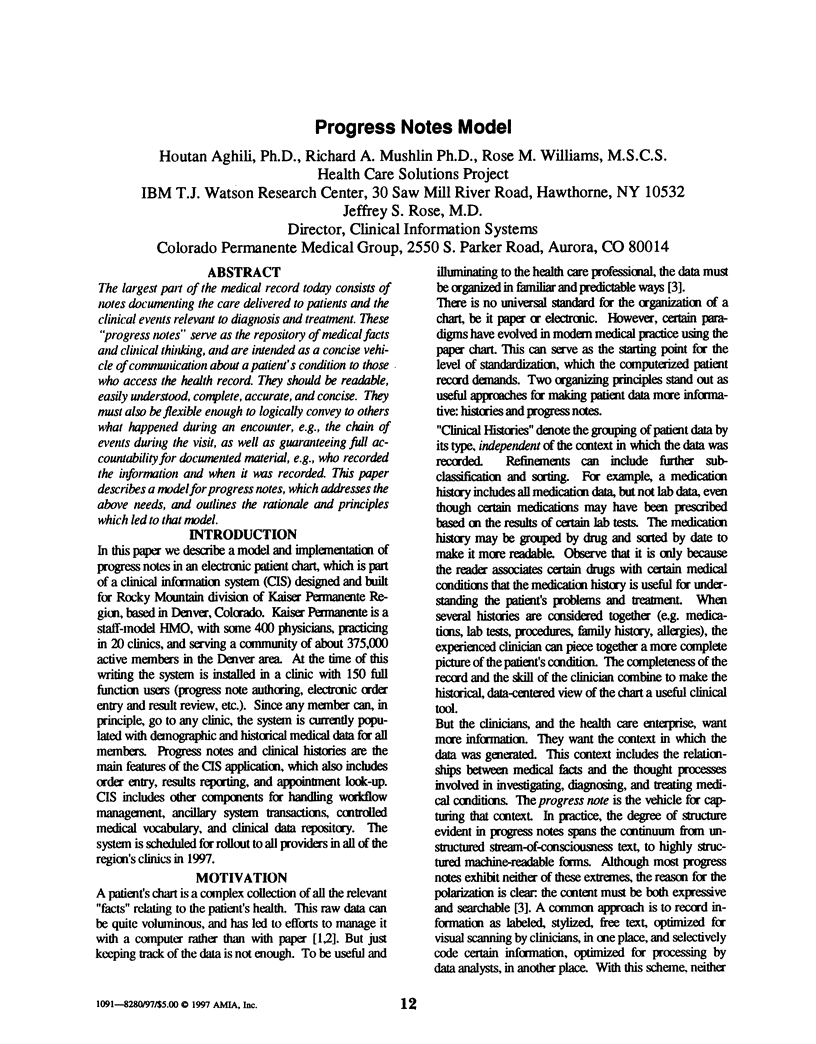
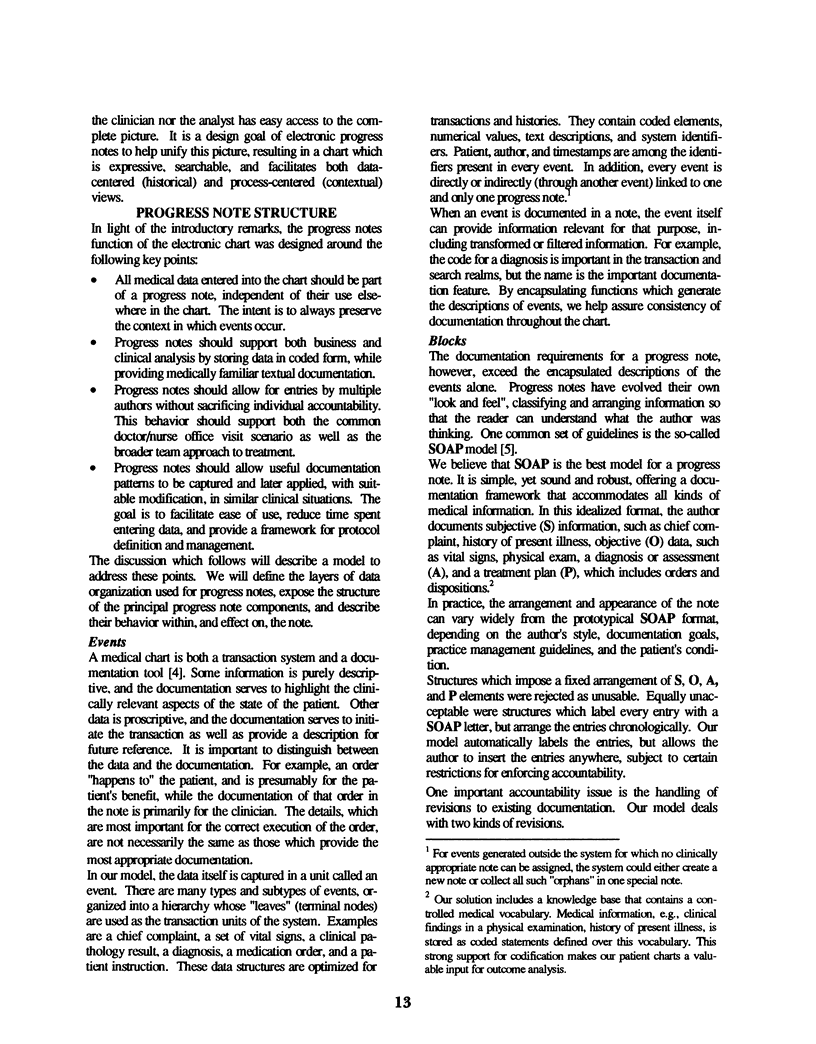
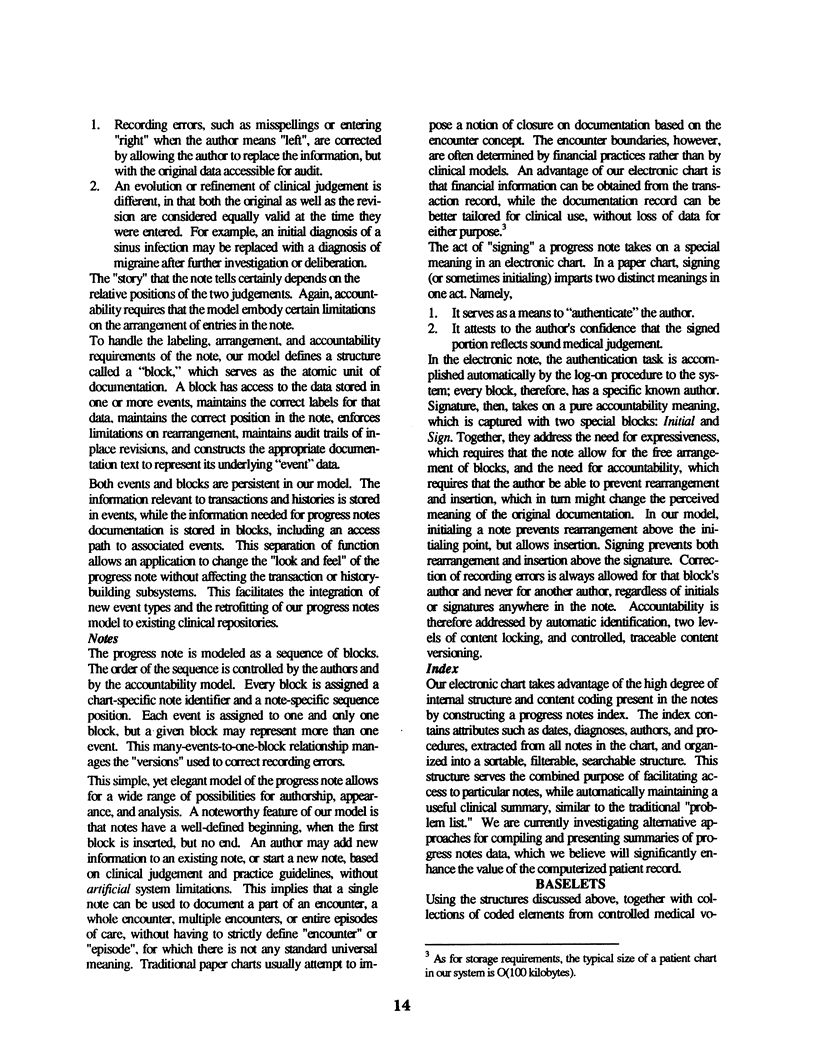
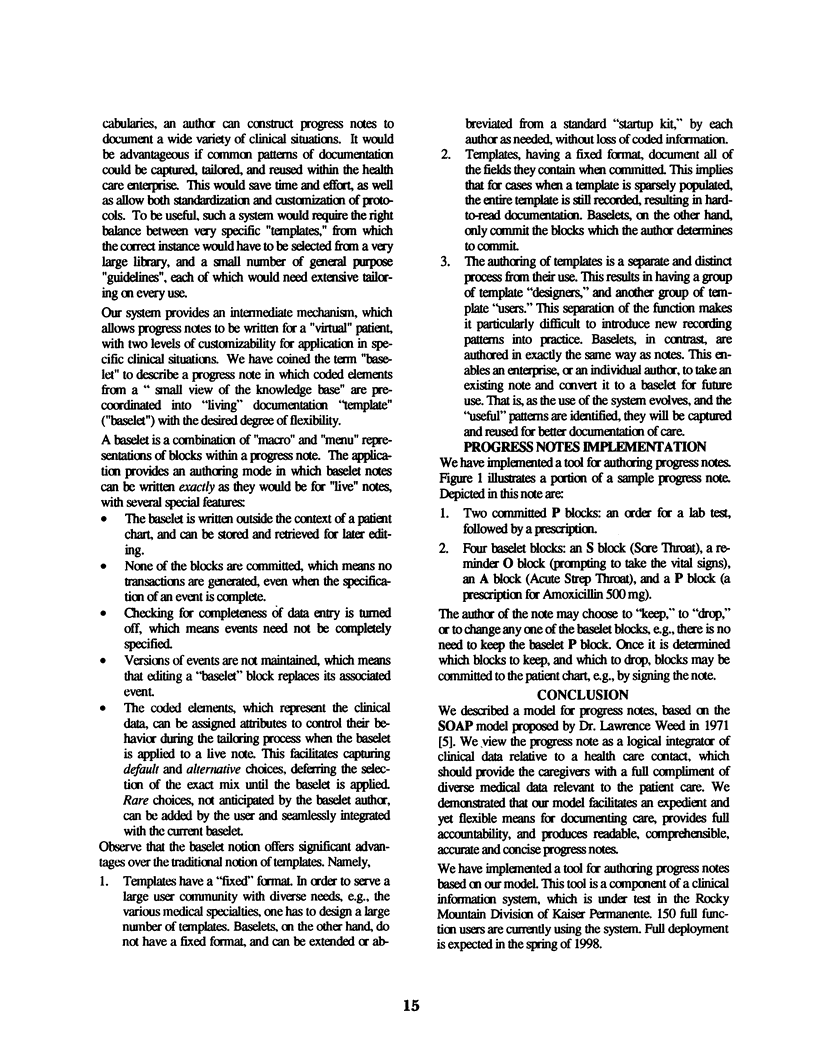
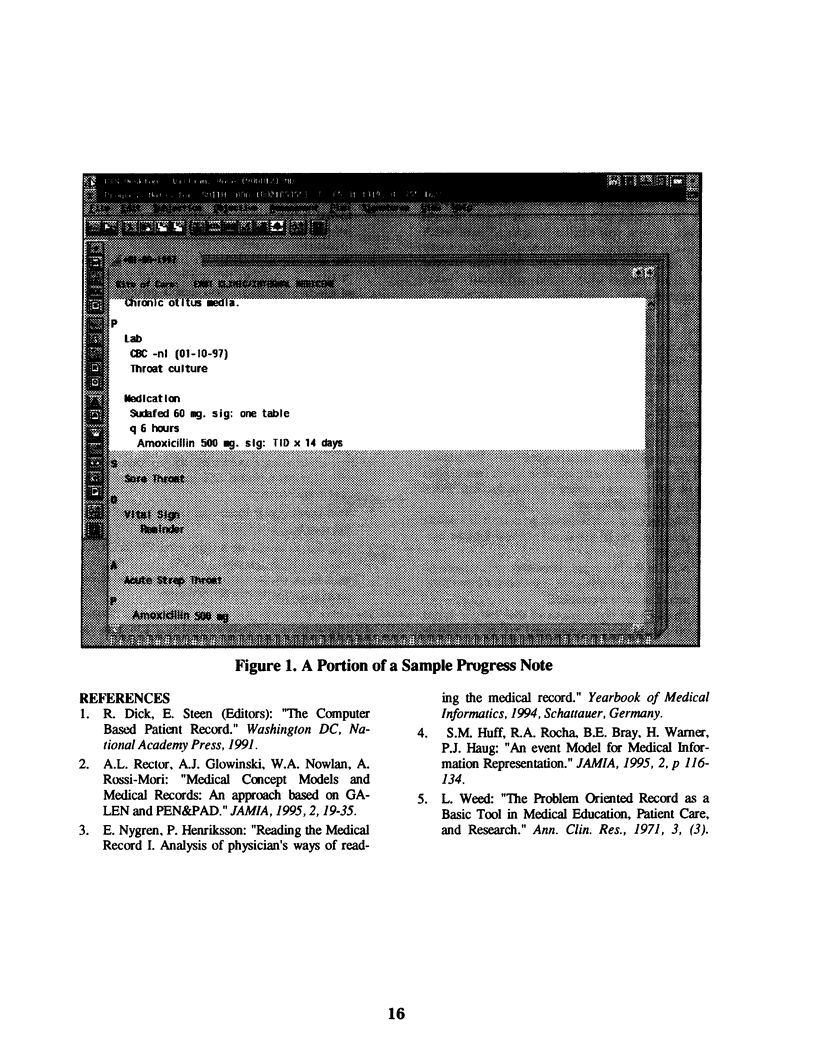
Selected References
These references are in PubMed. This may not be the complete list of references from this article.
- Huff S. M., Rocha R. A., Bray B. E., Warner H. R., Haug P. J. An event model of medical information representation. J Am Med Inform Assoc. 1995 Mar-Apr;2(2):116–134. doi: 10.1136/jamia.1995.95261905. [DOI] [PMC free article] [PubMed] [Google Scholar]
- Rector A. L., Glowinski A. J., Nowlan W. A., Rossi-Mori A. Medical-concept models and medical records: an approach based on GALEN and PEN&PAD. J Am Med Inform Assoc. 1995 Jan-Feb;2(1):19–35. doi: 10.1136/jamia.1995.95202545. [DOI] [PMC free article] [PubMed] [Google Scholar]


